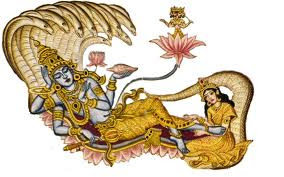Thus, he set out on a journey and met many holy men with whom he discussed his problem. But, none of them could come out with a solution. At last, he met Sage Angira who instructed him to observe the Devshayani Ekadashi falling during the Shukla Paksha of the Ashada month. As advised, the king went back to his palace and observed the vrat along with family members and courtiers. As expected, the kingdom received rains thereby ending the three years of severe drought. Thus, the lost glory and merit of the kingdom was regained.
Devshayani Ekadashi is popularly known as Deva Sayani Ekadashi, Shayana Ekadashi, Tholi Ekadashi, Pedda Ekadashi, Vishnu Sayan Ekadashi, Harivasara Ekadashi, Maha Ekadashi, Ashada Devasayani Ekadashi and Padma Ekadashi in different parts of India. Thousands of devotees gather on the banks of River Godavari at Kala Ram Temple and take a holy dip in the waters while paying obeisance to Lord Rama. Devotees observing the Devshayani Ekadashi vrat follow the same rules associated with other Ekadashi fasts.







